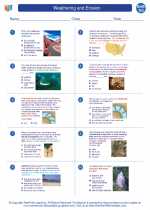Symbiotic Relationships
Symbiotic relationships are interactions between two different species that live closely together. These relationships can be beneficial, harmful, or neutral for the organisms involved. There are three main types of symbiotic relationships: mutualism, commensalism, and parasitism.
Mutualism
Mutualism is a symbiotic relationship in which both species benefit from the interaction. For example, the relationship between bees and flowers is mutualistic. Bees obtain nectar and pollen from the flowers, while the flowers are pollinated by the bees, allowing them to reproduce.
Commensalism
Commensalism is a symbiotic relationship in which one species benefits while the other is neither helped nor harmed. An example is the relationship between barnacles and whales. Barnacles attach themselves to the skin of whales, using the whales as a substrate for their growth, but the whales are not significantly affected by the presence of the barnacles.
Parasitism
Parasitism is a symbiotic relationship in which one species (the parasite) benefits at the expense of the other (the host). Parasites can harm the host organism, but they usually do not kill it immediately. Examples of parasitism include ticks feeding on the blood of mammals and tapeworms living in the intestines of their hosts.
Study Guide
Here are some key points to remember about symbiotic relationships:
- Define symbiotic relationships and the three main types: mutualism, commensalism, and parasitism.
- Give examples of each type of symbiotic relationship and explain how each organism involved benefits or is affected.
- Discuss the ecological significance of symbiotic relationships and how they contribute to the stability of ecosystems.
- Explain the concept of coevolution and how it is related to symbiotic relationships.
[Symbiotic Relationships] Related Worksheets and Study Guides:
.◂Earth Science Worksheets and Study Guides High School. Weathering and Erosion

 Worksheet/Answer key
Worksheet/Answer key
 Worksheet/Answer key
Worksheet/Answer key
 Vocabulary/Answer key
Vocabulary/Answer key
 Vocabulary/Answer key
Vocabulary/Answer key
 Vocabulary/Answer key
Vocabulary/Answer key
